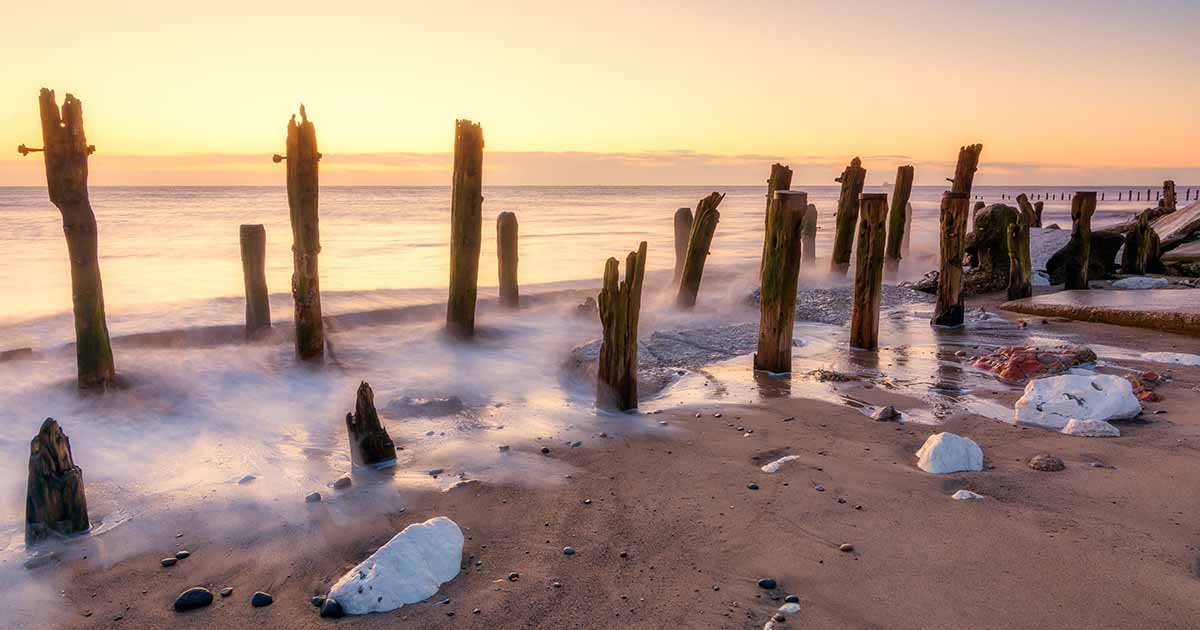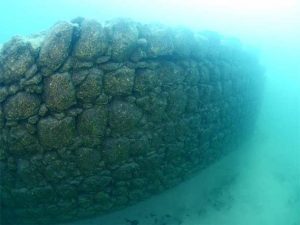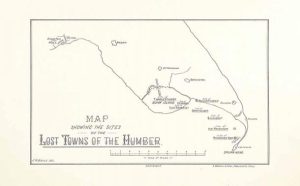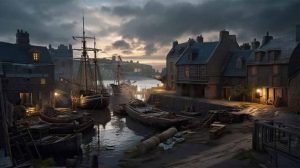Looking for Ravenser Odd: An English port town lost to the sea in the Middle Ages

England’s sea-swept coasts were always at the mercy of the elements. Those remotest towns and villages, lying directly on the seashore, always existed on the brink. Their inhabitants never knew if the next day would see their homes and hearths swept away. That is because the coasts of southeastern England, particularly those in Yorkshire, were threatened by erosion. Because of this, many of the thriving towns that existed for centuries now no longer exist. One such town is Ravenser Odd, which boasted a lengthy history and a bustling community. But even so, it could not resist the forces of nature and ultimately vanished from the coastal view.

Representational image of underwater remains. (underocean / Adobe Stock)
The Vanished Port Town of Ravenser Odd
Ravenser Odd was a medieval port town that existed on the east coast of England, specifically in East Riding of Yorkshire. Located in the vicinity of the present-day Spurn Head, a narrow sand spit that separates the North Sea from the Humber Estuary, Ravenser Odd was once a thriving and prosperous port during the 13th and 14th centuries AD.
Ancient Submerged Cities: Rethinking Our Ancestry
Record UK Drought Exposes Ancient Sunken Village and Bridge
The name “Odd” is thought to be derived from the Old Norse word odde, meaning a promontory or point of land, which indicates even older origins. “Ravenser” has similar origins, coming also from Old Norse Hrafn’s Eyr, meaning Raven’s Tongue, in connection with the shape of the promontory at the site. So, the name translates to Raven’s Tongue Promontory.
The town’s rise to prominence was largely due to its strategic location for trade and shipping. As a port town, it was founded by the Counts of Aumale, sometime in the mid-13th century. Possible founders are Ferdinand II of Castille, or his son, John of Ponthieu.
By 1299 AD, it is recorded that the town had more than 100 houses—which was immense at the time—and had a flourishing market. This indicates that it rose to prominence quite quickly. In that same year it was granted a borough charter, and was recorded to have its own warehouses, wharves, a prison and a court. It was written that Ravenser Odd collected dues from more than 100 merchant ships every year.
In the 13th century, the town was certainly more important and wealthier than Kingston-upon-Hull which lay further up the river Humber. The town even sent two of its most prominent members to the Model Parliament of 1295. However, the prosperity of Ravenser Odd was short-lived. The town faced several challenges, including coastal erosion and the changing course of the Humber River. These factors eventually led to the decline and abandonment of this bustling seaside port.

Map showing the location of the so-called Lost Towns of the Humber, including Ravenser Odd. (The British Library)
The Disappearance of Ravenser Odd
The exact date of the town’s demise is uncertain, but historical records suggest that it may have been swallowed by the sea during a severe storm in the late 14th century. Some accounts also mention the possibility of intentional destruction by rival towns or the military.
The hardest blow, however, came in the winter of 1356-1357 when England’s coasts were pummeled by strong winds and floods. Ravenser Odd was completely flooded, and the citizens had to abandon their homes. It is probable that they never returned.
Just a few years later, in 1362, the terrifying Saint Marcellus Flood swept across Europe, causing around 25,000 people to perish. It also completely swept away and destroyed Ravenser Odd, wiping it from the face of the Earth.
Ten Incredible Underwater Discoveries That Have Captured Our Imagination
Finding the Lost City of Heracleion: Encountering Myth Under the Waves
Centuries later, scientists are hoping to re-discover the port town that likely lies some 500 meters off Spurn Point. Using the latest echosounder technology and scanning the sea floor, they are detecting features that indicate a complex urban layout amongst what could be the remnants of the underwater city. The team working on it is led by Professor Dan Parsons, formerly a geoscientist at the University of Hull, and now Pro Vice-Chancellor for Research and Innovation at Loughborough University.
Thanks to the funding from the Higher Education Innovation Fund, the team was able to reach certain milestones and will hopefully uncover the lost underwater sunken city.
“We’ve covered about 500 meters by about 100m wide and the next phase will do another 500m. It’s a bit like mowing the grass, we’ll keep going over it,” Prof Parsons said. “Once we’ve found it, we’ll be really interested in getting divers down there and looking for artifacts. It will all have to be okayed through official channels. As a settlement, it would have had graves. But going back 700 years, normally that’s less of an issue when it’s less recent than, say, the Titanic.”

Representational image of a medieval port town. (FrankBoston / Adobe Stock)
Ravenser Odd: Sleeping Beneath the Frigid Waves
Who knows what marvels will be discovered beneath the sea, and who knows how well-preserved the underwater city could be? Are the wooden structures all gone now, or did the cold waters preserve them? Either way, it will be a thrill to see what discoveries will be made at Ravenser Odd.
Today, the city is remembered as one of the few lost medieval ports and archaeological evidence occasionally emerges from the shifting sands in the area. The story of Ravenser Odd serves as a reminder of the dynamic and often precarious nature of coastal settlements in the face of natural forces and changing environmental conditions. The great sea is merciless